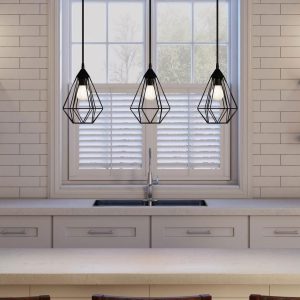
Unleashing the Power of Robust Lighting Technology: A Comprehensive Look
Lighting technology has undergone a significant transformation over the years, moving from simple light bulbs to sophisticated LED lights, which are not only more efficient but also more durable. Additionally, with advancements in technology, the use of robust lighting systems has become increasingly popular in the construction industry.
What Is Robust Lighting?
Robust lighting refers to a lighting system that is designed to function optimally in harsh environments like construction sites, tunnels, maritime environments, and other challenging settings. The technology deployed in creating robust lighting systems usually involves the use of materials that can withstand extreme temperatures, high levels of moisture, and heavy physical impact.
The Benefits of Robust Lighting
Robust lighting technology is used in a wide range of industries, including construction, aviation, mining, and oil and gas. These light systems provide a range of benefits, including long-lasting durability, energy efficiency, and improved safety. Robust lighting technology is also more reliable, reducing the likelihood of downtime caused by light failure.
Applications of Robust Lighting Technology
Robust lighting technology is used in a variety of settings, including construction sites, underground tunnels, and aviation. Compared to traditional lighting systems, robust lighting provides a level of durability that keeps the lights operable, even in the most challenging environments.
Construction Sites
The construction sector is a significant user of robust lighting technology. The use of durable and robust light fixtures during construction projects helps to improve visibility onsite, reducing accidents and maximizing productivity. Robust lighting allows contractors to work around the clock, increasing work efficiency, and project timelines.
Underground Tunnels
Robust lighting is widely used in underground tunnels, such as subways or mining tunnels. In these settings, lighting is critical to ensuring worker safety and visibility. The use of robust lighting systems allows for reliable lighting, even in challenging environments where other lighting systems may fail.
Aviation
Robust lighting technology is also used in the aviation industry, particularly in airfield lighting. These lights are designed to withstand harsh climates and weather conditions, ensuring that the runways are always visible during landing and takeoff.
The Future of Robust Lighting Technology
As technology continues to evolve, the robust lighting market is expected to continue growing. The use of more efficient and durable LEDs, coupled with longer-lasting battery systems and solar-power technology, will increase the applicability of robust lighting technology. Additionally, the development of smart lighting systems that can adapt lighting levels to changing environments will likely become the norm.
Robust lighting technology has come a long way from the traditional light bulbs. The advent of LED technology has revolutionized lighting, and with the introduction of robust lighting systems, the efficacy of lighting solutions has further increased. The use of robust lighting allows businesses to operate in harsh conditions, increasing productivity, and improving safety. As technology continues to evolve, we can expect robust lighting solutions to become even more efficient, affecting various aspects of our lives.


